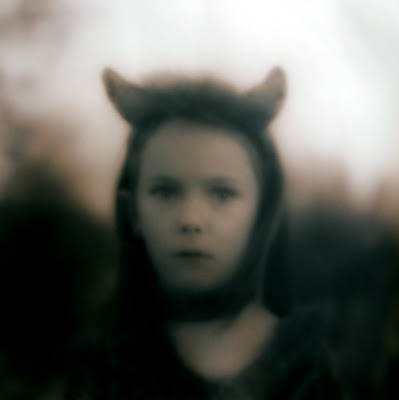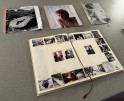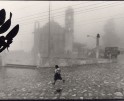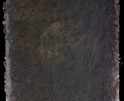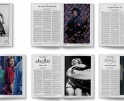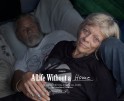Success Stories: Ken Rosenthal
Many years ago, back in the Stone Age when photographers used film and worked in the darkroom, and when I was struggling to find my voice as a photographer and looking a lots of work, I came across images that had a tremendous impact on me. I discovered that there was to be an exhibition of this work in Los Angeles and I rushed to the gallery to see the show. I remember walking around the exhibit with chills and it almost felt as if I was in a cathedral, a sacred space in my mind showing me something familiar, yet new, vintage, yet modern, a memory, yet a fact. I wasn’t in the habit of contacting photographers, but I sent Ken Rosenthal an e-mail letting him know how profoundly moved I was by his work, and we struck up a friendship. I have a real soft spot for Ken, outside of his image making, as he was the first person who extended a hand to me, helping me through my first portfolio review, sharing his knowledge and his rollodex, and I have never forgotten that.
These many years later, I am so happy to share Ken’s work as a Success Story, and have the opportunity to bring exposure to his Kickstarter campaign, his upcoming Wall Space Gallery show (which in the karmic way the world works, comes on the heels of my own solo exhibition at the same gallery), and an interview with insights into his life and work.
Ken was born in California, received his BA in still photography from University of Southern California School of Cinema-Television, and his MFA from the School of the Art Institute of Chicago. Now living in Tuscon, Arizona, Ken is represented by numerous galleries, his work his held in countless museum collections, and since 2002, has been in over 150 solo and group exhibitions.
Ken is about the open an exhibition, Retrospective, at the Wall Space Gallery in Santa Barbara in October, and as part that event, he decided it was time to produce a catalog to accompany the show. His Kickstarter campaign, designed to offset printing costs, is on it’s way to be funded, and I know he would very much appreciate his support in this endeavor.
“I have crafted a tight edit of my strongest work for this collection, which will feature an introduction by Rebecca Senf, Ph.D, Norton Family Curator, Center for Creative Photography, Tucson, Arizona. It will be printed in a small edition of only 500 softbound copies. A special limited edition of 50 numbered copies accompanied by a toned silver gelatin print will also be available.”
Congratulations on your upcoming wall space gallery exhibition. I see the title is Retrospective–how does it feel to have the opportunity to look backwards and forward all at the same time?
It’s wonderful to have the opportunity to do this in gallery exhibition. And it honesty feels quite natural to me. I don’t feel there is as much of a sense of separation between each series I’ve released, as is often the case with an artist’s work. I think each series of mine, up to this point, has transitioned very organically into the next. Very much like chapters in a book, or books within a series. I feel as though I am constantly looking back as I am progressing onwards with a new body of work, with previous images and ideas informing what is evolving. It feels great, really, to have an audience that not only continues to be engaged in the work that I have made but also is still interested in seeing what I am doing next.
Your Kickstarter campaign is a brilliant idea for creating an exhibition catalog—can you share your thought on this idea and process? We need a Ken Rosenthal monograph!
Thank you! Several months ago I was talking with my dear friend Mary Virginia Swanson (who, I’m assuming, needs no introduction to the readers of Lenscratch) about where to go next, career-wise. We talked about the upcoming show with Crista at Wall Space, and without hesitation Swan told me I needed to produce a catalogue. And as she’s telling me this I know she’s right…she always is. It’s just uncanny. The only problem is that I just do not have the funds to produce a catalogue, even a relatively modest one. I don’t need to tell anyone how brutal the past 3-4 years or so have been. But as much as I tried to backpedal, Swan remained the glass half-full in the room. “You’ll figure it out…just start working on it.” Before I knew it, we had meetings set up with a designer and a local press in town, and we’re moving full steam ahead. Still, the funding is not in place. Late one night while lying in bed and stressing out about aforementioned lack of funds, I remembered this website called Kickstarter that a friend had told me about. There were a few photo projects on the site, including one by a friend, and it seemed like as feasible way as any I could think of to come up with the finances. Swan was skeptical at first, which then got me really nervous that it was an unrealistic idea. But the more in depth we researched past and active Kickstarter campaigns, the more we believed it might work. I spent a great deal of time on the site. I did extensive structure my own Kickstarter project. And I fell in love with the idea of it for quite a few reasons.
I had no intention of borrowing money from anyone for this. With Kickstarter, people pledge money towards a creative project in exchange for “rewards”, which can range from thank you notes for small pledges, to valuable items (such as original artwork or one of a kind experiences) for larger pledges. My thinking was that this was a good way to, in essence, pre-sell the catalogue. I would not mark the catalogue up: I would offer it for a pledge equaling what the retail price of the catalogue and the price to package and ship it would be. And for higher pledges there are catalogues with a small silver print, as well as a limited edition of the catalogue with a choice of silver-prints. This has also enabled me to offer prints at a smaller size and less expensive price than my regular editioned prints sell for. I have for some time wanted to be able to make some work that was at once accessible to more people and also would not compete with the works that my galleries handle.
My Kickstarter page went live August 15, with a funding goal of $7,000. Kickstarter is all or nothing funding. I knew the project’s costs were already estimated to be higher than $7,000, but I got into this space of self-doubt (see your question on that below), and played it safe. As I am writing this, less than two weeks after the launch date, nearly $6,000 has been pledged. So I feel we have a very good chance of not only meeting the funding goal but also exceeding it. And that would be great, to be able to worry less about how the project’s bills will be paid and allow myself to focus wholly on the creative end of the process. I need to send a big thank you to everyone who has contributed to this point and to all who will pledge before the project ends on September 20. And thanks are also due to any number of people who could not pledge wrote me words of encouragement and have been Tweeting about the project or posting links on their Facebook pages. Our family of photographers is the best…we really look out for each other in ways artists who work in other media don’t.
The second line of this question made me smile Aline…thank you. There is nothing I would like more than to have the opportunity to release a monograph. I know that there is an interest in that, and I feel confident that it will happen. But it has to be the right situation. The work that I’ve made from Seen and Not See through Days Between is too personal and precious to me to release unless I know it will be exactly what I want it to be. I would never want to hold my first monograph and feel disappointed in the end result.
The last 10 years have been amazing for you. I remember walking through Photo LA a few years back a feeling like there wasn’t a gallery that didn’t represent your work. Bravo for having such a long roster of galleries who believe in you and your work (8 and counting)!
It has been a great 10 years. I have always believed in my abilities, and myself, but I’ve also always been a realist when thinking about the business of art and the photography market. And I never would have imagined that my work would be as well received as it’s been. I’ve been blessed to work with so many fine galleries over the past 10 years. It sickens me to have seen so many excellent photography galleries, several of which have represented my work, close down over the past 4-5 years. I understand why it is happening, but it is so unfortunate.
Are you still making work exclusively in the darkroom?
Ah, the timing of your question is unbelievable. As I answer your question I can say yes. But this morning, as this piece goes live, I am meeting with a master printer about printing my forthcoming series, The Forest (which you are premiering several images from) using archival pigment on paper. I joked about going digital a few years ago on April Fools Day on my FB page, but this series really has been shot digitally and will likely be printed digitally. That said, I will continue to print my existing work in the darkroom. Beyond this series I’m working on, I can’t say. I will use whatever process seems most appropriate for the images I am working on.
I love the idea of making art that has universal appeal with images that are so personal to you—and your ability to evolve as an artist within those parameters. Can you talk about this?
Sure. I believe that as an artist, or rather an artist that looks inward and makes work that comes from an honest place, you naturally draw from your own life experiences. So, whether I am imaging something that is literally representative of my own life (I.e. my children, or the forests in the NW where I spend my summers) or looking outwards at something less personal to me, I am approaching these subjects with a similar sensibility and sensitivity. While we are all wholly unique beings, and have very different experiences and circumstances, there is still so much that we share in common. I still think about The Family of Man, the first photography book I am consciously aware of viewing. My printing technique removes so much specificity that a viewer can more easily enter images that are very specific to my own life, and then bring their own associations to that image. I think that working from my own interior allows me to successfully evolve as an artist. There is a personal investment in the work, and when that is present, you can’t help but evolve. Ultimately, I am a storyteller. And if I want people to listen I need to tell a story that rings true because it is from my experience, and also has a common thread that they can relate to.
Your new series, The Forest, is very different, very dark and delicate. Can you share some thoughts about this work specifically?
Yes. For about two to three years now I have very gradually been inching away from the formal qualities that people associate my work with. When one works in a highly stylized manner for a long time, it can be hard to break away from that for any number of reasons: expectations of audience; a real or perceived loss of recognizability; the comfort factor. The series prior to this, That Was The River, This Is The Sea, was the first series where I backed off of the blur I had employed for years. But there is still a very recognizable connection to the earlier work. I think with this latest series, The Forest, I’ve made an even greater shift formally.
All of the images have been made in the Selkirk Mountains, in NE Washington State. We have a family cabin in a National Forest where I have spent nearly every summer of my life. There is no place on earth that I have greater affection for. But as beautiful as it is, there is a very palpable sense of mystery and darkness in the woods. I believe that there is a very strong presence of spirits in this forest, a presence that is hard to define but is sensed and felt. As you traverse the periphery of this area, it appears pristine: very neat and seemingly ordered. But as you hike further in you realize that there is more of a state of disorder. Fallen trees and jagged branches litter the forest floor. Majestic Ponderosa pine gives way to a more gnarled mass of decayed and fallen trees, clusters of anthropomorphic trees akin to those in a fantastical film.
The Forest in part relates to a specific place, but is in essence an exploration of self. For me, it’s the most complicated and personal work I’ve done. It is the first series I’ve made in which all of the images are landscapes. Yet it is not at all about landscape. The landscapes merely stand in for an internal space: one thatis dense, layered, not easily navigated, and filled with myriad revelations waiting to be discovered.
In laying out the images I couldn’t help but notice that your work gets darker and darker. I will never forget seeing the Rothko retrospective at the Guggenheim and his brilliant, bright colorful paintings started at the top of the spiral and got darker and darker as you wound down the ramp until the final ones were black…any thoughts on going this direction?
I have always been drawn to darker subjects, even as a child. I try not to make work that is too one-dimensional, though. My life is not all dark: I have an amazing family, and am fortunate to be able to spend the majority of my days engaged in a photographic life. But life is a balance of lightness and darkness. If it’s completely weighted to either extreme, something’s off. Over the past 6 years or so, my life has become considerably more complicated. I have been acutely aware of how a greater degree of inner turmoil has manifested itself in starker compositions, and in work that is darker both visually and in terms of it’s content. Physically, I find greater comfort in the dark. My eyes are very sensitive to light, and I am much more at ease in a dark room (or a darkroom!), and prefer to be outside at night as opposed to the daytime. I don’t sleep much, and I like to work in the quiet of night. I’m not big on very sunny days, which is a bit of a problem living in the desert. I would imagine a series of nocturnes is in my future.
I loved your work from the second I discovered it, but my reverence for your ability to create art with your photography came from that wonderful exhibition at the White Room Gallery where two artists were asked to swap negatives and print each other’s work. It consisted of one image printed by the artist, and the same image printed by another photographer. It was thrilling that you were paired with Hiroshi Watanabe and seeing the result of your approach was spectacular. The moodiness and evocative quality that you bring to your printing is so deliciously wonderful.
Thank you Aline. That was one of the most special and exciting projects I’ve had the pleasure to be involved in. The exhibition, Inspirations and Interpretations, was predicated on Ansel Adams’ analogy of a negative being akin to a musical composition, and likening the print to the performance of that composition. I had met Hiroshi maybe a year or so prior to that show, and we struck up a friendship. The way the show was conceived made it a truly collaborative experience. We each made a list of several of our own negatives that we would like to use, as well as what negatives of our partners we would like to print. We discussed the choices, and settled on images we were both comfortable working with, printed our own negatives, and then exchanged negatives. It was fascinating to print several of Hiroshi’s negatives and to have full artistic license. And then to see how he approached printing my work was equally fascinating. The whole idea of giving one of your negatives to someone else could be a really edgy experience, right? But having come to know Hiroshi, I fully trusted him. He is a meticulous printer, and, in my opinion, one of the greatest photographers working today.
Your life is incredibly full – a new baby, which makes 3 beautiful daughters, and you are married to photographer Lisa Robinson. How do you juggle making art, teaching, parenting, and being engaged in a photographic life?
It’s hard at times, it really is. And I occasionally drop some of those balls. I think it helps to realize that while photographers tend to be perfectionists, we aren’t perfect. I try to do the best that I can in terms of balancing all of these things. But I also realize that sometimes I have to make sacrifices, and I need to try to prioritize as best as I can. Lisa and I both get what each other does. I know that when she has a big show coming up, or is on deadline for an important project, that that is her priority and I try to pick up some of the other pieces so she can focus on the main objective. And vice-versa. It also helps that my older daughters, for the most part, understand how frenzied I can get when I am immersed in a project.
What advice can you give emerging photographers, especially on presentation, on networking, on consistently producing excellent work?
As far as presentation goes: keep it clean, neat, and simple. And real. You do not need to blow all your money on a titanium portfolio case with inset slices of asteroids. Your work should speak for itself, and if the work isn’t there it doesn’t matter what it’s housed in. Networking: You need to do it. It’s essential. If you’re shy, you’ve got to get past that. Go to portfolio reviews, network with your fellow photographers and reviewers there. Develop a local network of fellow creative’s. Find a social networking site that works for you, whether that be Face book, Twitter, whatever. Most importantly, and maybe most obviously: be yourself. On consistently producing excellent work: Never accept anything from yourself but your best effort. Be true to yourself. Make work that comes from within. Don’t make work to try to meet market demands, or trends. Make the work that you want to make, at least as far as your personal work goes.
Yes, I’m glad you noticed that. If you look through my work sequentially, there are several patterns that emerge. One is that there tends to be proportionally fewer portraits as each series progresses. And the work gets darker, both literally and figuratively. The prints for The Forest will be very dark. I envision them as having a charcoal drawing-like quality.
What would you say was the one thing that helped get your foot in the door, and took your exposure to the next level?
It was really more like three linked things, not just one. First, I met Swanee shortly after I moved to Tucson. She has always been so generous with her time and knowledge, and has been one of my dearest friends and confidants. If it were not for her and her constant encouragement, I don’t know that we are having this conversation right now. She gave me the encouragement I needed to pursue my art full time, and always steered me in the right direction. Second, I gave myself a year to do nothing but make art. And that time to focus on nothing but thinking and creating was what I needed to make work that was substantial enough that I felt confident approaching a gallery. I am fortunate that, while I live in a relatively small city, Tucson has one of the great photography galleries. Terry Etherton of Etherton Gallery agreed to look at my work nearly 10 years ago. The timing seemingly could not have been worse: a week or two after 9/ 11. But the work struck a chord with Terry, and Etherton was the first gallery that represented my work. I learned a lot from Terry, and still do. He’s a great guy.
Are you involved in social networking outlets? Do you tweet or are you active on Facebook?
Ha! You should ask Lisa this question. Yes, I am a bit of a Facebook junkie to be sure. I do use it primarily to network and keep photographers. Most of my friends are photographers, and are spread out all over the world. It’s a great way to see what everyone is working on, reading about, etc. I really enjoy some of the FB groups, such as Flak Photo Network. I like Twitter, and follow a few people that I find to have interesting posts, but I don’t tweet all that often.
Do you ever have periods of self-doubt and feel creatively unmotivated?
Absolutely. Anyone who claims they don’t is lying. I’ve had a few bouts of the visual artists version of writer’s block. I’ve learned that, at least for myself, it’s best not to fight it too much. I think it’s natural, and it resolves itself in time. But it can be incredibly frustrating. Right now I am feeling quite inspired, and excited by the newest work I’m making.
And finally, what would be your perfect day?
It starts out very early with a photo session. I am shooting the cover for Springsteen’s new album (not in reality…in our perfect day scenario.) After shooting a few rolls of Tri-X 320 (again, perfect day…I’ve got plenty of 320 with me), Bruce kindly offers to play a few songs, acoustic, all requests. I meet Lisa for breakfast at Cafe Pasqual’s in Santa Fe, and then we hit the road and spend the day shooting. It almost doesn’t matter where we go, because I love being on the road with her and our cameras. Oh yeah, we have a babysitter, so we get to actually talk to each other the entire day. And then we drive back for dinner at Pasqual’s, followed by a soak at 10,000 Waves. Hmmm…I think I like Santa Fe.
Posts on Lenscratch may not be reproduced without the permission of the Lenscratch staff and the photographer.
Recommended
-
Suzanne Theodora White in Conversation with Frazier KingSeptember 10th, 2025
-
Maarten Schilt, co-founder of Schilt Publishing & Gallery (Amsterdam) in conversation with visual artist DM WitmanSeptember 2nd, 2025
-
BEYOND THE PHOTOGRAPH: Q&A WITH PHOTO EDITOR JESSIE WENDER, THE NEW YORK TIMESAugust 22nd, 2025
-
Beyond the Photograph: Editorial Q&A with Photographer Tamara ReynoldsJuly 30th, 2025







